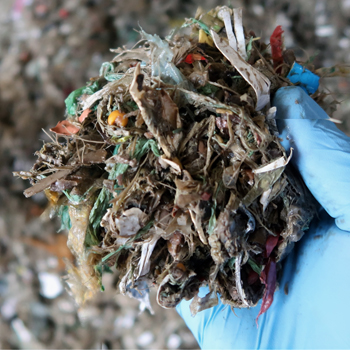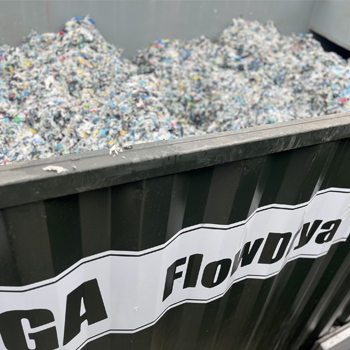Make the Most of Your HookLoada Trailer
At Stronga we believe in sharing our knowledge and experience to help people like you succeed at your work.
We speak to many customers who ask questions about the best hook lift container choices over a wide range of applications to match their HookLoada trailer. We have therefore put together a series of guides by container type to assist customers in making the right decisions around optimal hook lift container specification, features and options, in order to deliver the overall best HookLoada solution outcomes.

Considering Hook Lift Standards
The first thing we advise the customer to do when specifying a new hook lift container is check the local country hook lift chassis standard to ensure you have the correct container standard for your country and hook lift trailer. Stronga manufacture different standards of HookLoada trailer to ensure compatibility with local container standards. These include DIN, CHEM, Swedish standard and AFNOR. The hook-bar size, height, chassis width and locking arrangement can vary between the aforementioned standards.
This useful guide covers high-sided, bulk material hook lift containers with all the optional features you may want to consider.

Considering Hook Lift Container Length
When considering container length, we advise customers to consider the overall length of the hooklift trailer. Manufacturers produce different length equipment and the length dimensions need to be checked to ensure compatibility. Datasheets for each model of HookLoada trailer can found on stronga.se. Below is an example datasheet for a HL210ST (Swedish Standard) trailer.

In the case of the HL210ST trailer, Stronga suggest an optimal container length of 6480mm. When the 250mm dimensions at the front and rear of the container structure are deducted, you are left with an inside length of 6230mm. The recommended overall container width is 2550mm (local country variations may apply) while the height can vary to achieve the optimal capacity for the material.

Considering Hook Lift Container Capacity
The calculation of the container’s side height starts from the capacity of the hook lift trailer. As an example, Stronga’s popular HL210ST HookLoada has a capacity of 21 tonnes, including the container weight and payload. 21 tonnes, minus the tare weight of the container (example - 2 tonnes), leaves 19 tonnes of payload to consider.
Next, the bulk density kg/m³ of the material to be transported needs careful consideration. If, for example, you are considering handling a maize silage material at roughly 550kg per m³ (estimate), it is clear the hook lift container (including heaping) needs to be circa 35m³.

Considering Rear Door Arrangements
Another important factor for the customer to consider when specifying the hook lift container is the rear door arrangement. Generally, there are multiple door options available, including:
• Simple, single doors. While these are robust and easy to operate, they do require a large area to swing open; however they do offer the potential to easily drive wheeled and tracked equipment into ground-demounted containers.
• Hydraulically-operated doors, such as hi-capacity container shown in the photo below. This particular container would be suitable for light, bulky materials such as sawdust and wood chip.
• Combination rear door doors - single-side plus top hung or double barn doors plus top hung combi (see inset photo).
• Top hung rear door with flip door combination.
• Double or barn rear doors.
• Top hung rear doors.

Example Bulk Container Types
While Stronga no longer produce standard hook lift containers in-house, we do have many years’ experience in designing, producing and selling various-type bulk containers. The following extract shows a few projects where we have supported clients in optimising their bulk material transport efficiency.
The first example in the photo below shows a standard high-sided, bulk container with a roll sheet and hydraulic rear door arrangement. Standard bulk containers like these hold their value extremely well; they are very durable, resalable and do not tend to depreciate significantly, even after years of heavy use.

The photo below shows multiple hook lift bulk containers lined up on the verge of the field at grain harvest. Owning and operating multiple containers allows the operator to shuttle containers which means the customer can save on owning and operating multiple trailers, instead operating one high performance HookLoada transport shuttle.

The photo below shows a tapered bulk container with roll sheet. Notice the front viewing windows, access ladder and easy manual operation of the roll sheet when the container is ground-demounted. This particular container is a grain body designed with smooth and tapered sides to ensure the material, when tipped, is ejected evenly and effortlessly from the container into the store.

The photo below shows a bulk container with dual ability. This one is designed mainly for cereals and sized in particular for grain. Weight and capacity of the container were optimised to maximise grain transport efficiency.
Silage sides have been added to this container to increase bulk capacity for lighter bulk density materials such as chopped maize, grass silage and rye. The hydraulic door with silage extensions is a key feature while this container is also tapered to ease emptying of bulk materials settled during transit.

Notice the auger fixed on the back of the high-sided grain container pictured below. Augers can vary in size as the inset photo demonstrates. Augers are a useful option for grain drill filling and fertiliser.
Features on hook lift containers are generally limitless and may include: head-board lashing rings; floor and side-mounted internal lashing points; vegetable damper sheets to prevent damage during harvest operations; ventilated floors for cooling crops, preventing spoilage and damage; and much more.

The photos below show a container with a bulbous, hydraulically-operated rear door. This special-type rear door allows even more bulk capacity for handling and transporting light materials like maize silage and wood chip.

The silage container in the photo below has been designed to fully optimise cubic carrying with an even more bulbous rear door that slightly overhangs the rear of the HookLoada trailer.

Notice how the hook bar is recessed back into the container in the example below. Much like the bulbous rear door in the photos above, this special container gives added, optimised cubic capacity on a large tri-axle hook lift. The trailer photographed below is a HL260ST tri-axle HookLoada. The HL260ST and HL300ST models allow extra-long, higher capacity containers to be handled, maximising efficiency with lighter, bulky materials.

The photos below show a container which has been custom-built specifically for brussel sprouts. Notice the spout out of the back of the container which has been adequately sized and positioned to chute the sprouts into a hopper. The body has been slightly tapered to funnel the brussels during tipping cycles.

The photo below shows a ‘container fleet’. Customers owning Stronga hook lift equipment often look to maximise their potential by building up different type hook lift bodies to extend their flexibility across jobs. You can see a higher bulk capacity container on the left, a low-sided heavy material container in the middle and a flatbed with its multiple lashing points on the right.

There are even more options in the photo below. To the far right you can see a hook lift vacuum tanker which Stronga continue to manufacture and sell as part of our product portfolio. The black unit centre left is a high capacity logging body while a bulk container and flatbed make up the remaining two container types. Investing in multiple hook lift solutions like this increases the potential of the client’s hook lift trailer.

Contact Stronga
The above photos are just examples of various type bulk containers. There are many creative pioneers leading the progress in hook lift applications and there are many different ways to get the job done using a HookLoada trailer, together with correctly-specified hook lift containers.
If you have any questions about any of the information in this article, please don’t hesitate to contact our sales team using the following details. We look forward to hearing from you.
Email – sales@stronga.co.uk
Photo – 01992 519000



Share this post